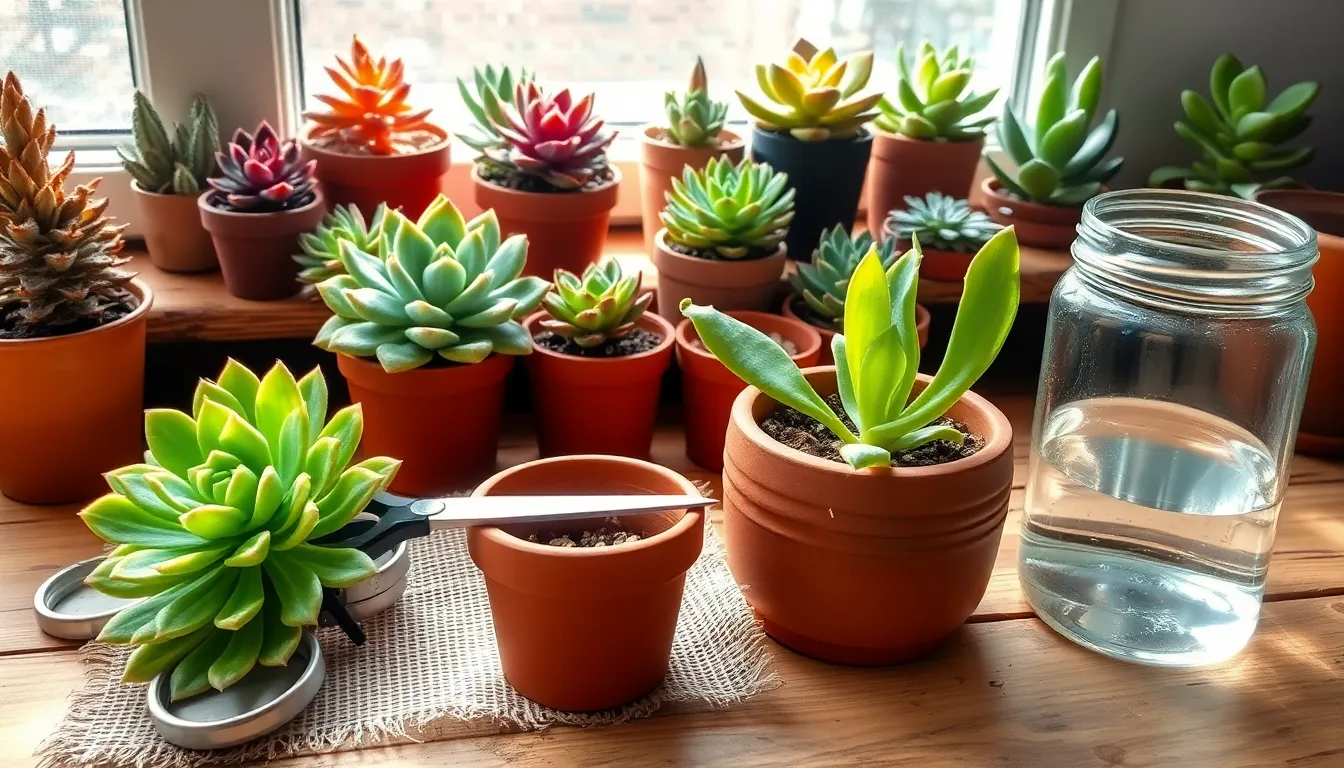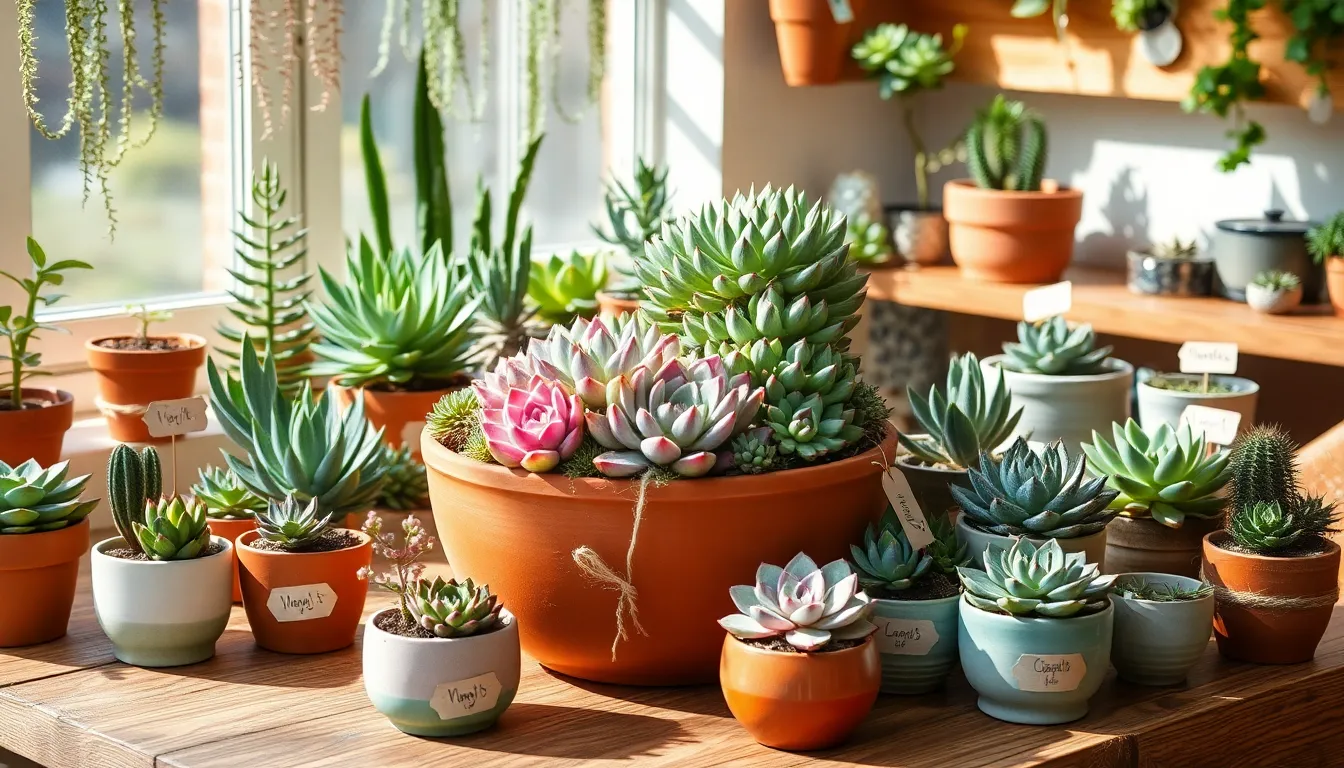In the world of gardening, succulents are like little jewels—sturdy, vibrant, and brimming with personality. Whether you’re just digging into the soil of your gardening journey or you’re a seasoned plant whisperer, these low-maintenance wonders offer a burst of color that can transform any space into a lush oasis. Their diverse palette ranges from calming blues to fiery reds, inviting you to explore a world where nature’s artistry is on full display, all within the comfort of your home or garden.
Succulents are more than just visually striking; they are also champions of resilience, thriving in conditions that might challenge other plants. By learning about these adaptable beauties, you’ll not only discover how to incorporate a rainbow of hues into your living space, but you’ll also gain valuable insights into their care and cultivation. This article will guide you through a curated list of 20 colorful succulents, offering tips and tricks on how to nurture them to their fullest potential. By the end, you’ll be equipped to brighten up your space with confidence and creativity, turning even the smallest corner into a vibrant, living masterpiece.
Introduction to Vibrant Succulents

Succulents are a fantastic choice for gardeners seeking low-maintenance yet stunning plants. These hardy beauties thrive in bright light and prefer well-draining soil, making them ideal for sunny windowsills or outdoor rock gardens.
To ensure your succulents remain vibrant, select a pot with drainage holes to prevent root rot. A gritty mix, such as cactus soil or a blend of sand, perlite, and potting soil, will provide the perfect environment for their roots.
Watering succulents requires a delicate balance, as they should be watered thoroughly but infrequently. Allow the soil to dry out completely between waterings—typically, every two weeks is sufficient, but this can vary based on humidity and light conditions.
Advanced gardeners can experiment with propagation, which is a rewarding way to expand your collection. Simply detach healthy leaves, let them dry for a few days to form a callus, then place them on top of moist soil to encourage new growth.
Choosing Succulents for Color

Choosing the right succulents can add an array of colors to your garden or indoor space, transforming it into a vibrant oasis. When selecting succulents for color, consider varieties such as Echeveria, Sedum, or Kalanchoe, which are known for their stunning hues.
It’s important to match the growing conditions to the needs of your chosen succulents to ensure they thrive. Most colorful succulents prefer bright, indirect light for at least six hours a day and well-draining soil to prevent root rot.
Beginner gardeners should start with hardy varieties like Echeveria ‘Lola’, which displays beautiful pastel shades and requires minimal care. Water these succulents sparingly, allowing the soil to dry completely between waterings, typically every two weeks.
For those seeking a more advanced challenge, consider adding Aeonium ‘Sunburst’ to your collection, which features striking variegated leaves. This succulent thrives in cooler temperatures and will reward your efforts with vibrant yellow and green foliage, especially when given occasional fertilizer during the growing season.
Understanding Succulent Color Varieties
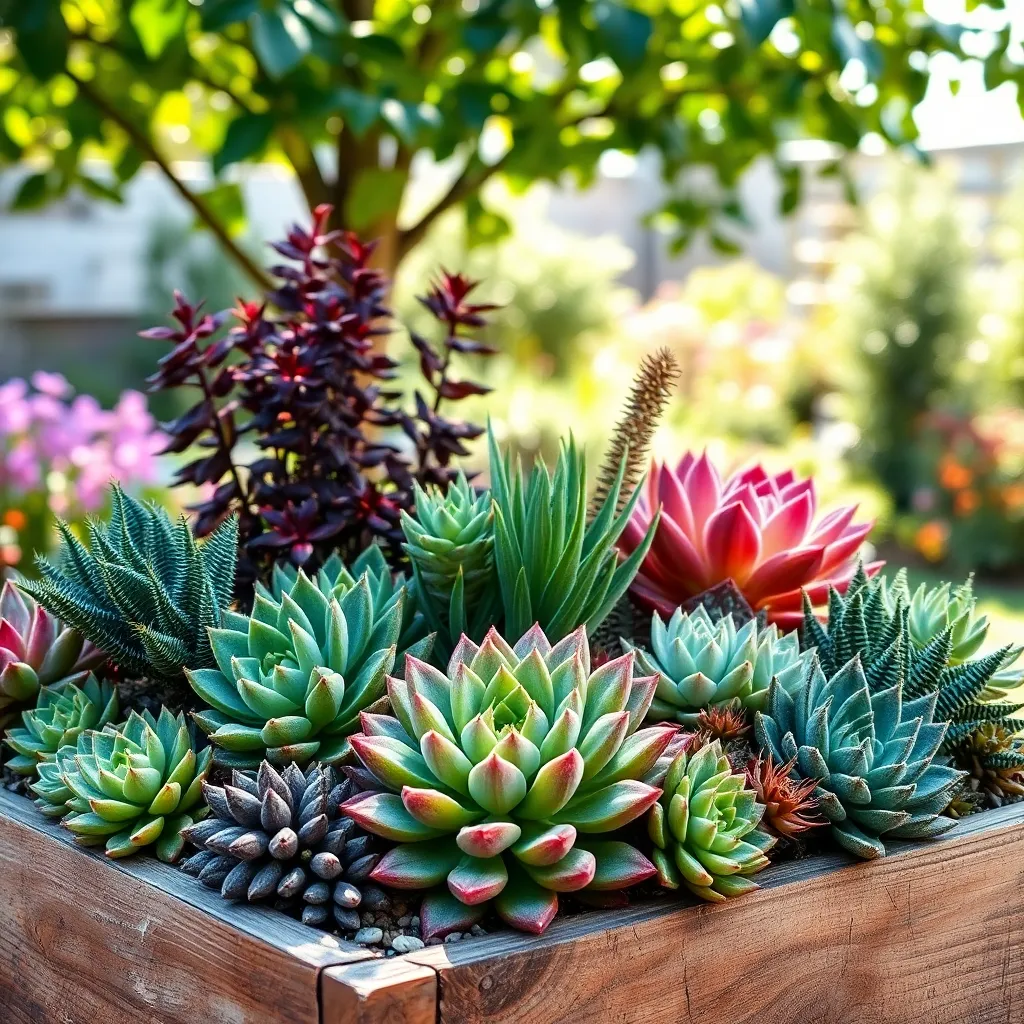
Succulents come in an array of vibrant colors, from deep greens to bright purples and even fiery reds. Understanding these color variations can help you create a visually striking display that thrives in your specific environment.
Many succulents change color based on environmental factors, such as light exposure and temperature. For example, increased sunlight can enhance the red, pink, or purple hues of succulents like the Echeveria and Sedum.
It’s essential to place your colorful succulents in locations where they can receive the appropriate amount of sunlight. For those growing indoors, consider using a grow light to ensure your succulents receive the necessary light to maintain their vibrant hues.
When it comes to soil, succulents prefer a well-draining mix to prevent root rot, which can dull their bright colors. You can create an ideal mix by combining cactus soil with perlite or sand, ensuring your plants remain both healthy and colorful.
Watering frequency is crucial for maintaining the vivid colors of your succulents. Allow the soil to dry out completely between waterings, as overwatering can lead to dull, washed-out colors and unhealthy plants.
Advanced gardeners might experiment with stress techniques, such as controlled drought, to intentionally enhance the colors of their succulents. However, it’s important to remember that these methods should be employed carefully to avoid damaging the plants.
- Ensure your succulents get 6-8 hours of sunlight daily.
- Use a pot with drainage holes to prevent water accumulation.
- Consider using a moisture meter to help maintain the ideal watering schedule.
Top Picks for Bright Hues

When seeking vibrant colors in your succulent collection, consider choosing species like the Echeveria ‘Afterglow’, known for its stunning pink and lavender hues. This plant thrives in well-draining soil and requires bright, indirect sunlight to maintain its vivid coloration.
Another excellent choice is the Sedum adolphii, whose leaves turn a bright orange when exposed to full sun. Ensure it is planted in a gritty cactus mix to prevent root rot, and water sparingly, allowing the soil to dry out completely between waterings.
For a splash of blue, the Senecio serpens, or Blue Chalksticks, is a fantastic option. It prefers sandy, well-drained soil and should be placed in an area with direct sunlight to keep its color intense and vibrant.
To enhance the health and color of these succulents, consider using a diluted liquid fertilizer during the growing season. Regularly rotate your plants to ensure even light exposure and prevent them from leaning toward the light source.
Caring for Colorful Succulents
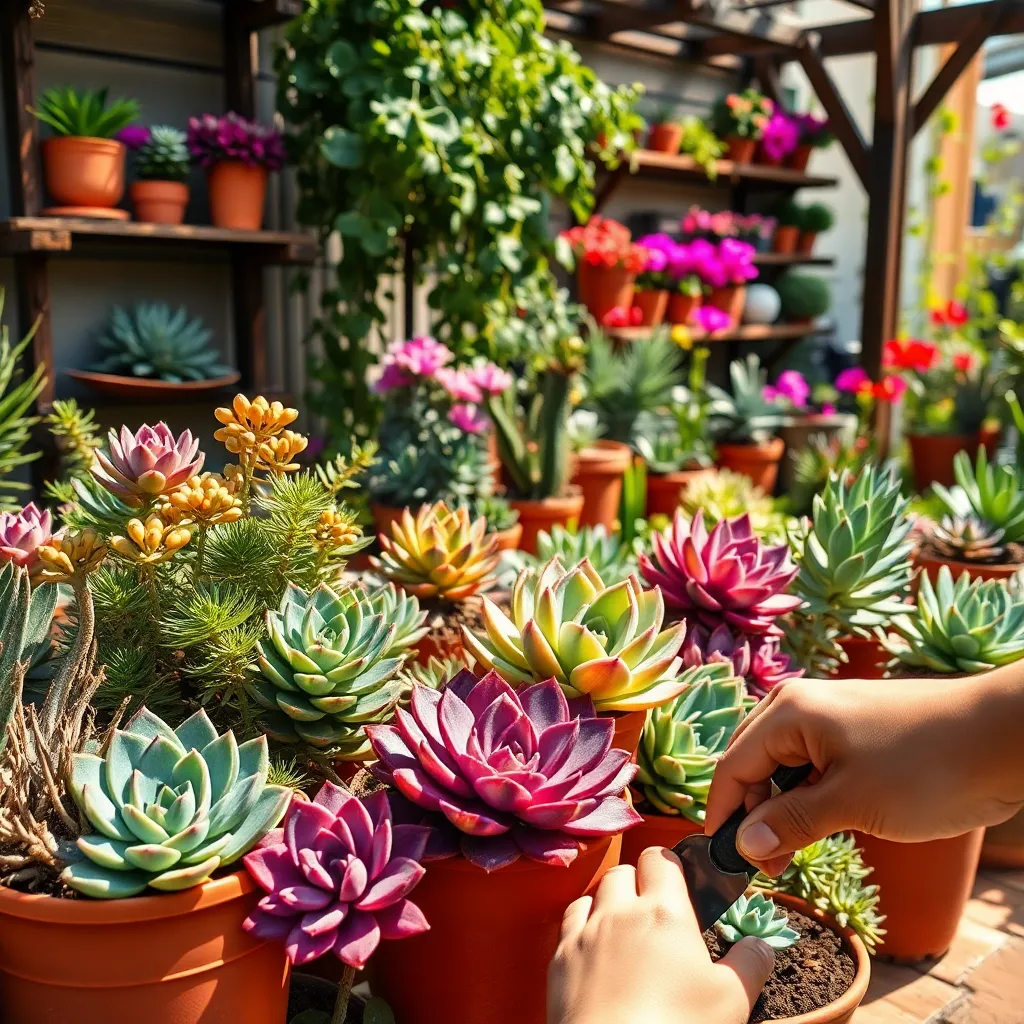
Colorful succulents are not only visually striking but also relatively easy to care for, making them a favorite among gardeners. To keep these beauties vibrant, it’s important to provide them with the right amount of sunlight. Place them in a spot where they receive at least six hours of indirect sunlight daily. If your succulents start stretching or losing color, they may need more light.
Watering is another critical aspect of succulent care. Unlike many other plants, succulents prefer to dry out between waterings. Allow the soil to dry completely before watering again, typically every 1-2 weeks depending on your climate and the season. Overwatering is a common mistake, so ensure that water drains freely from the pot.
Soil choice is paramount for healthy succulent growth. Use a well-draining soil mix, such as a blend of cactus soil and perlite, to prevent root rot. This mix allows excess water to escape and keeps the roots from sitting in moisture. If you’re repotting, choose a pot with a drainage hole to further aid in this process.
For those looking to enhance their succulent care, consider fertilizing during the growing season. Use a diluted, balanced fertilizer every 4-6 weeks in spring and summer. This can help promote growth and maintain vivid colors. Remember to reduce or halt fertilization in the fall and winter when succulents enter their dormant phase.
Light Needs for Vibrant Growth

Succulents thrive when they receive the right amount of light, which is crucial for maintaining their vibrant colors. Generally, these plants need about six hours of bright, indirect sunlight each day to flourish.
Position your succulents near an east or south-facing window to maximize their exposure to natural light. If your home lacks sufficient sunlight, consider using grow lights to supplement their needs, ensuring you mimic the natural day/night cycle.
It’s essential to monitor your succulents for signs of too much or too little light. Stretching or etiolation occurs when a succulent isn’t getting enough light, prompting it to grow tall and leggy as it reaches for more exposure.
Conversely, too much direct sunlight can lead to sunburn, causing unsightly brown or white patches on the leaves. To prevent this, acclimate your plants gradually to increased light levels, especially if moving them outdoors during warmer months.
Optimal Watering Practices
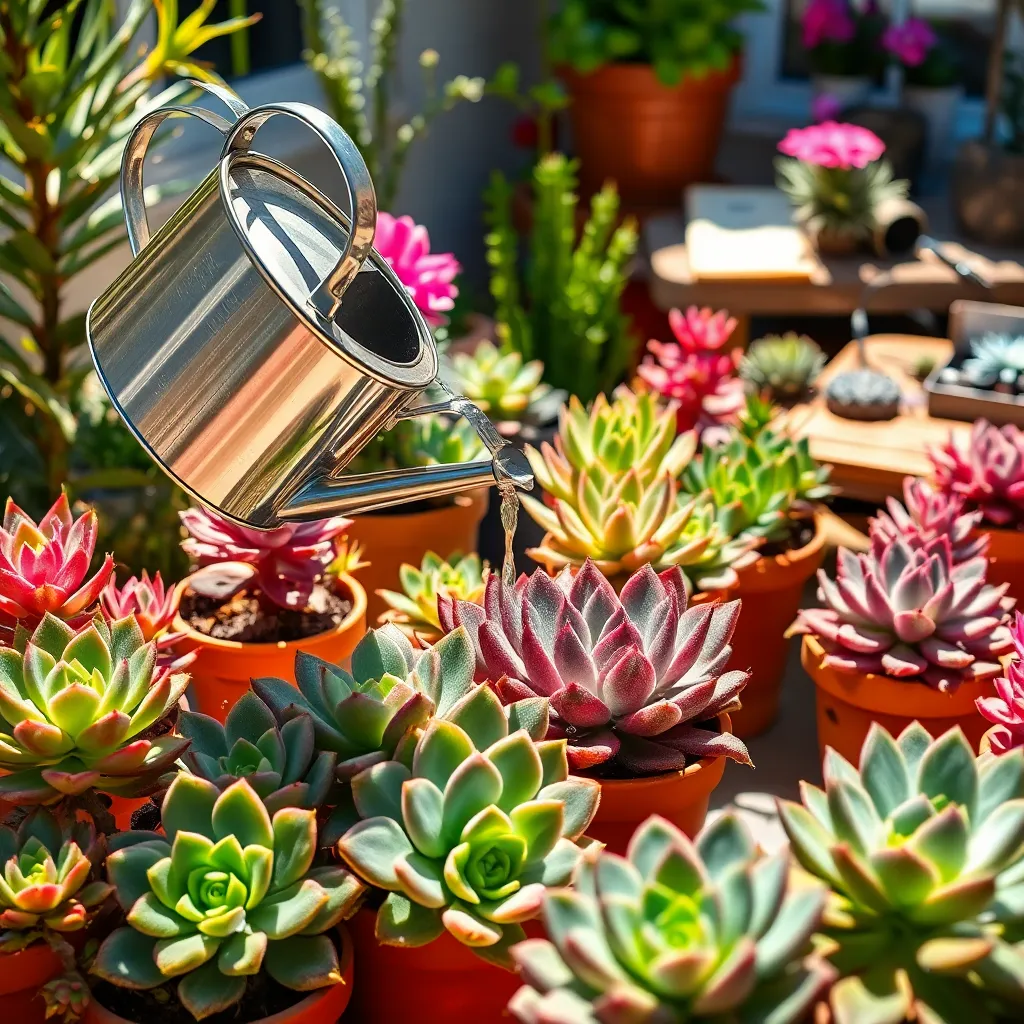
Watering succulents correctly is crucial to their health and vibrancy. These plants are adapted to arid environments, so they thrive on a cycle of thorough watering followed by a period of dryness.
When watering, ensure the soil is completely soaked, allowing excess water to drain out of the pot. Use a well-draining soil mix, such as a combination of cactus soil with added perlite or pumice, to prevent root rot.
It’s essential to let the soil dry out completely between waterings. To check if your succulent needs water, insert a finger about an inch into the soil; if it feels dry, it’s time to water.
For beginners, a once-a-week watering schedule is a good starting point, adjusting based on the plant’s response and environmental conditions. Advanced gardeners may fine-tune this schedule by observing the plant’s natural indicators, such as leaf firmness and color.
Ideal Soil Mix for Succulents
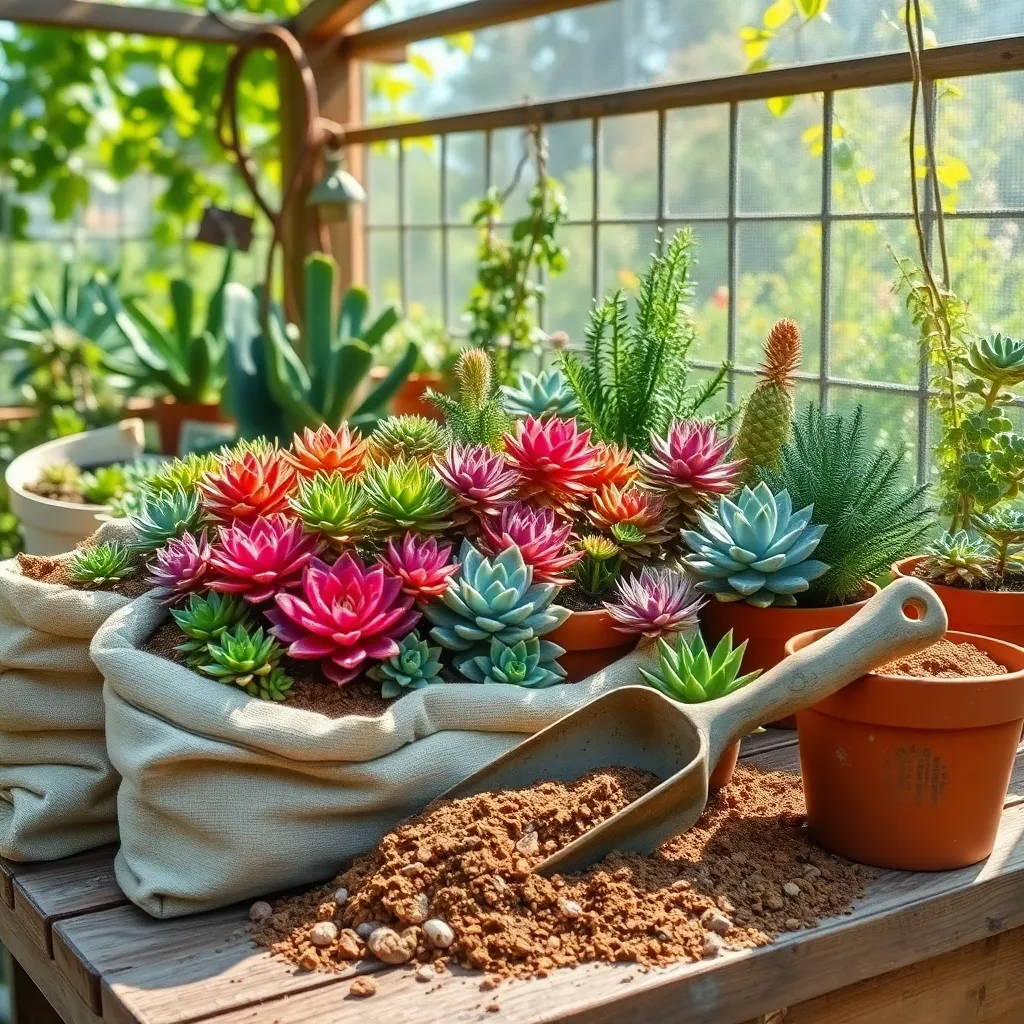
To give your succulents the best start, focus on creating the perfect soil mix. Succulents thrive in a well-draining soil environment, which prevents water from pooling around their roots and causing rot.
Begin with a base of regular potting soil and enhance it with an equal amount of coarse sand or crushed granite. This addition improves drainage and aeration, mimicking the natural arid conditions succulents prefer.
For those looking to optimize further, consider adding perlite or pumice to the mix. These materials increase the soil’s drainage capacity and provide a lightweight structure that encourages root growth.
After mixing your soil, make sure to test its drainage by watering it and observing how quickly water passes through. If it retains water for too long, adjust by adding more sand or perlite to achieve the desired consistency.
Potting Tips for Healthy Growth
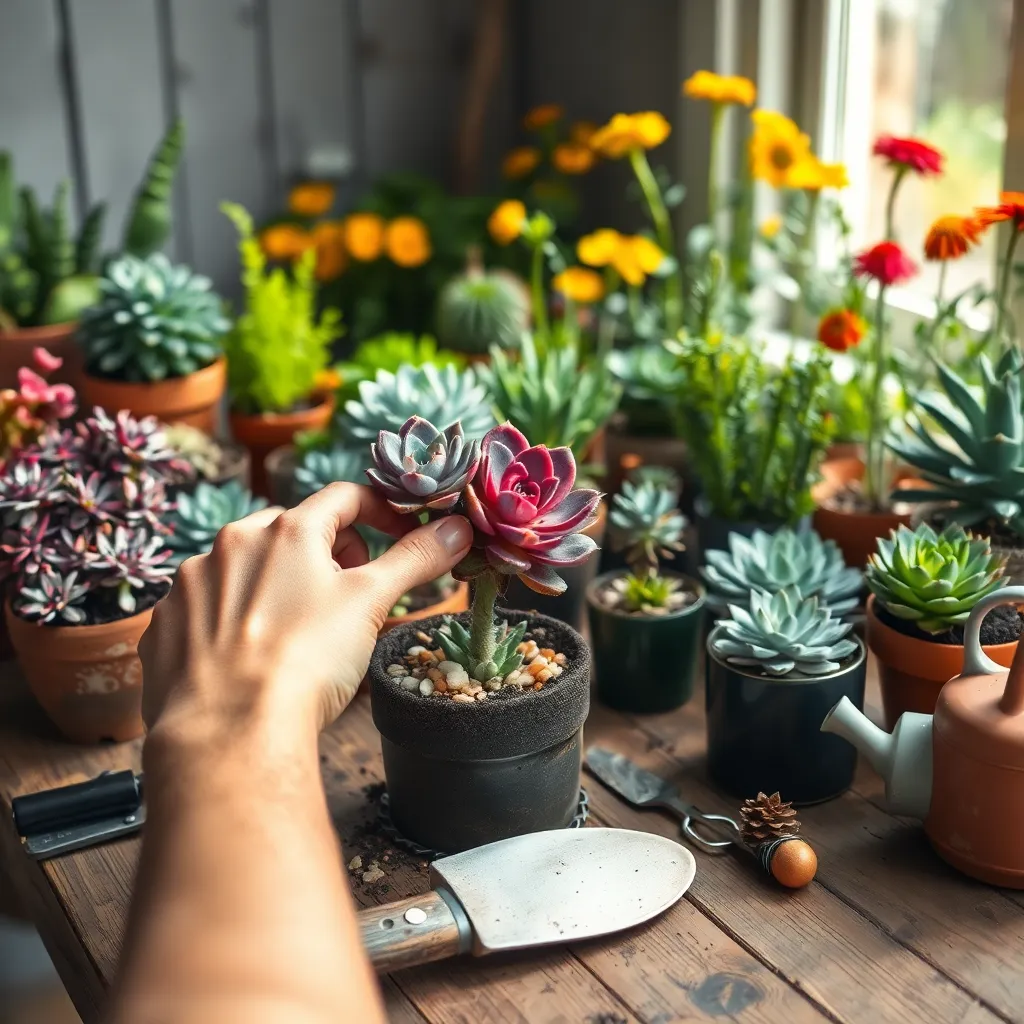
When potting succulents, start by selecting a container with good drainage to prevent water from pooling at the bottom. Using containers with drainage holes is crucial, especially for succulents, as they thrive in well-drained environments.
Choose a pot size that is just slightly larger than the root ball of the succulent. This allows the plant to grow without overwhelming it with too much soil, which can retain excess moisture.
For optimal growth, use a specialized cactus or succulent soil mix that facilitates quick drainage and prevents root rot. If you cannot find a pre-made mix, create your own by combining two parts potting soil, one part coarse sand, and one part perlite or pumice.
Watering should be done sparingly, allowing the soil to dry out completely between waterings. Overwatering is a common mistake, so it’s better to err on the side of underwatering with succulents.
Advanced gardeners can try top dressing with gravel or small stones, which not only enhances the aesthetic but also helps prevent soil erosion during watering. This technique also helps keep the base of the plant dry, reducing the risk of rot.
Temperature and Humidity Insights
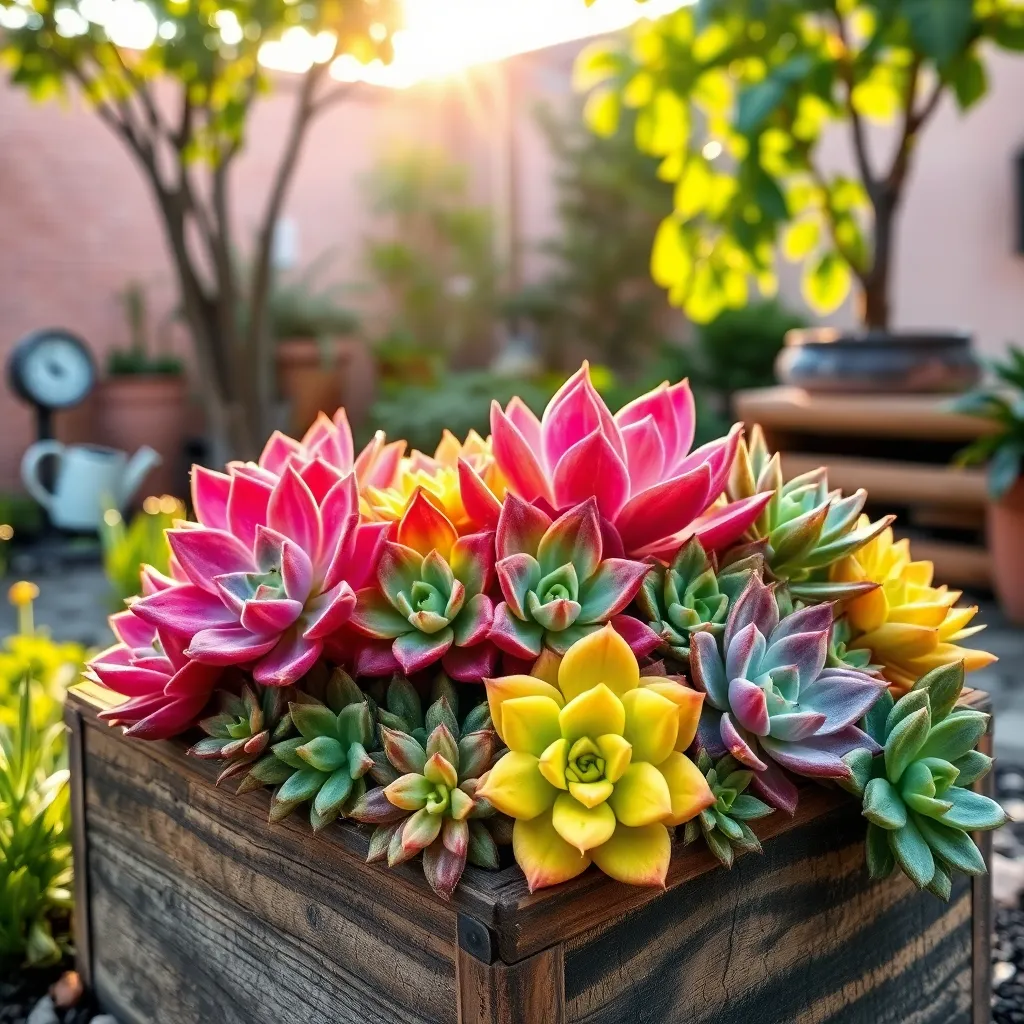
Understanding the right temperature and humidity levels is crucial for the vibrant growth of succulents. Most succulents thrive in temperatures between 60°F and 80°F, making them ideal for indoor environments.
To maintain healthy succulents, it’s important to avoid exposing them to temperatures below 40°F, as this can cause damage. During colder months, consider using a small heater or relocating your succulents to a warmer spot indoors.
Humidity plays a significant role in the health of succulents, as they prefer low to moderate levels. Aim to keep humidity levels between 40% and 60%, which mimics their natural arid habitats and prevents rot.
For gardeners in humid climates, using a dehumidifier can help maintain optimal growing conditions. Alternatively, placing a fan nearby can improve air circulation, reducing excess moisture around your plants.
Fertilizing for Enhanced Color
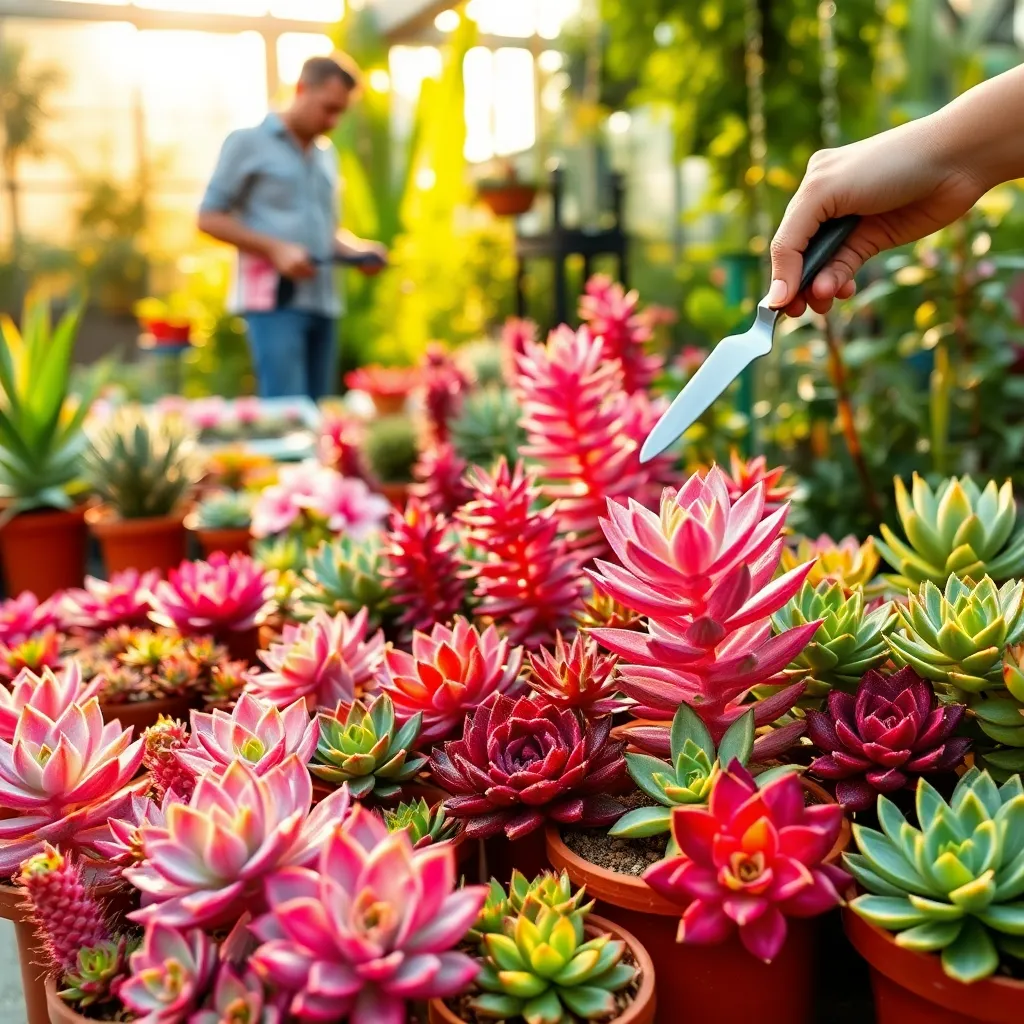
To enhance the vibrant colors of your succulents, consider using a balanced, water-soluble fertilizer formulated specifically for these plants. Fertilizing once a month during the growing season—typically spring and summer—can significantly boost their color intensity.
For those new to fertilizing, start with a diluted solution to avoid overwhelming your plants. A general rule of thumb is to use half the recommended strength to gently introduce nutrients without risking root burn.
Experienced gardeners might experiment with fertilizers high in potassium, as this nutrient can enhance color and bloom quality in many succulent species. Just remember that over-fertilizing can lead to excessive growth that might compromise the plant’s structural integrity.
It’s essential to choose a well-draining soil mix when fertilizing succulents, as this prevents root rot while allowing nutrients to be effectively absorbed. Consider adding perlite or pumice to your soil to improve drainage and aeration.
Spotting and Fixing Color Fading
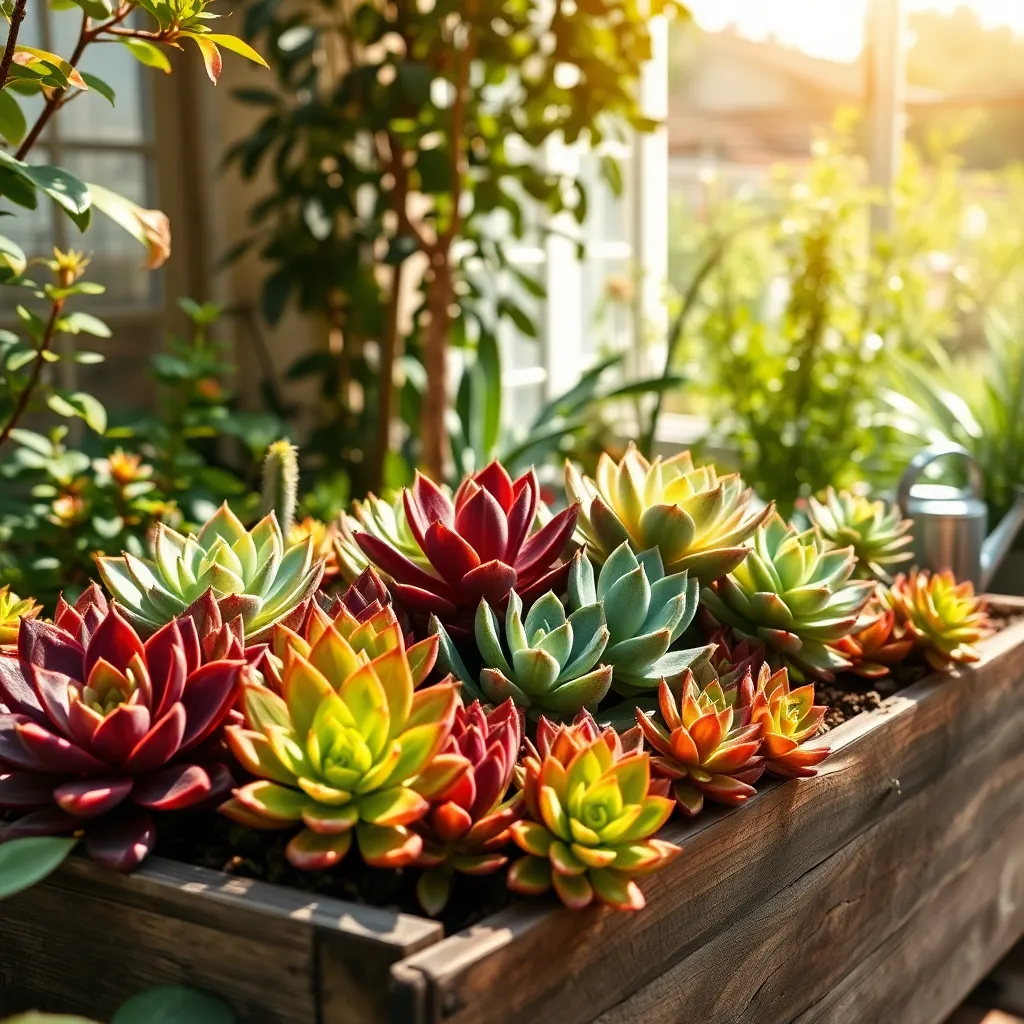
Color fading in succulents can be a sign that your plant is not receiving the optimal amount of light. To address this, position your succulents in a location where they can receive at least six hours of indirect sunlight daily.
Assess your watering routine if color fading persists. Succulents prefer a “soak and dry” method, meaning the soil should be thoroughly soaked and then allowed to dry out completely before the next watering.
Using the right soil is crucial for maintaining vibrant succulent colors. Opt for a well-draining cactus or succulent mix, or create your own by mixing three parts of potting soil with two parts of sand and one part of perlite.
For advanced care, consider supplementing with a balanced, diluted fertilizer during the growing season to enhance color. Apply the fertilizer once every four to six weeks, but avoid over-fertilizing, as it can lead to excess growth and dull colors.
Combining Colors in Arrangements

Combining colors in succulent arrangements can transform your garden or indoor space into a vibrant oasis. Start by selecting succulents with complementary colors, such as pairing bold reds and oranges with calming blues and greens.
Consider the color wheel when planning your arrangement to ensure a harmonious blend. Contrasting colors, like purple and yellow, can create a striking visual appeal that catches the eye.
For a more advanced approach, use succulents with varied textures to add depth to your arrangement. Mixing smooth, glossy leaves with spiky or fuzzy textures not only enhances color differences but also introduces an intriguing tactile element.
Ensure your color combinations thrive by placing succulents with similar light and water requirements together. Most succulents prefer well-draining soil; consider a mixture of cactus soil and perlite to maintain the ideal balance.
Succulents for Indoor Brightening

Succulents are an excellent choice for brightening indoor spaces due to their vibrant colors and unique textures. They thrive in sunny locations, so placing them near a window with plenty of indirect light will help them flourish.
When selecting succulents for indoor use, consider varieties like Echeveria and Crassula, which are known for their stunning color variations. These plants not only add a splash of color but also require minimal care, making them perfect for beginners.
Ensure your succulents are planted in a well-draining potting mix, such as a cactus blend, to prevent root rot. Water them sparingly, allowing the soil to dry out completely between waterings; typically, once every two to three weeks is sufficient.
For advanced gardeners looking to enhance their succulent care, consider using a diluted liquid fertilizer during the growing season for an extra boost. This will encourage more vibrant growth and maintain the plant’s health and coloration.
Outdoor Display Ideas for Succulents

Creating an outdoor display for succulents can transform your garden into a vibrant oasis. Start by choosing a variety of colorful succulents that thrive in your climate to ensure year-round visual appeal.
Use well-draining soil to prevent root rot, which is a common issue with succulents. A mix of sand, perlite, and potting soil is ideal, providing the perfect balance of drainage and nutrients.
Consider planting succulents in a tiered planter or vertical garden to add dimension. This setup not only saves space but also allows each plant to receive adequate sunlight, promoting healthy growth.
Water your outdoor succulents infrequently but deeply, allowing the soil to dry out completely between waterings. During hot summer months, this may mean watering once every two weeks, while in cooler seasons, once a month may suffice.
Choose a sunny location for your outdoor succulent display, as most varieties will flourish with at least six hours of sunlight daily. Be mindful of extreme afternoon heat, which can scorch the leaves, and consider providing some shade during peak hours if necessary.
For a creative touch, incorporate decorative stones or driftwood into your succulent arrangement. Not only do these elements enhance the aesthetic, but they also help retain heat during cooler nights, benefiting the plants.
Seasonal Care for Year-Round Color
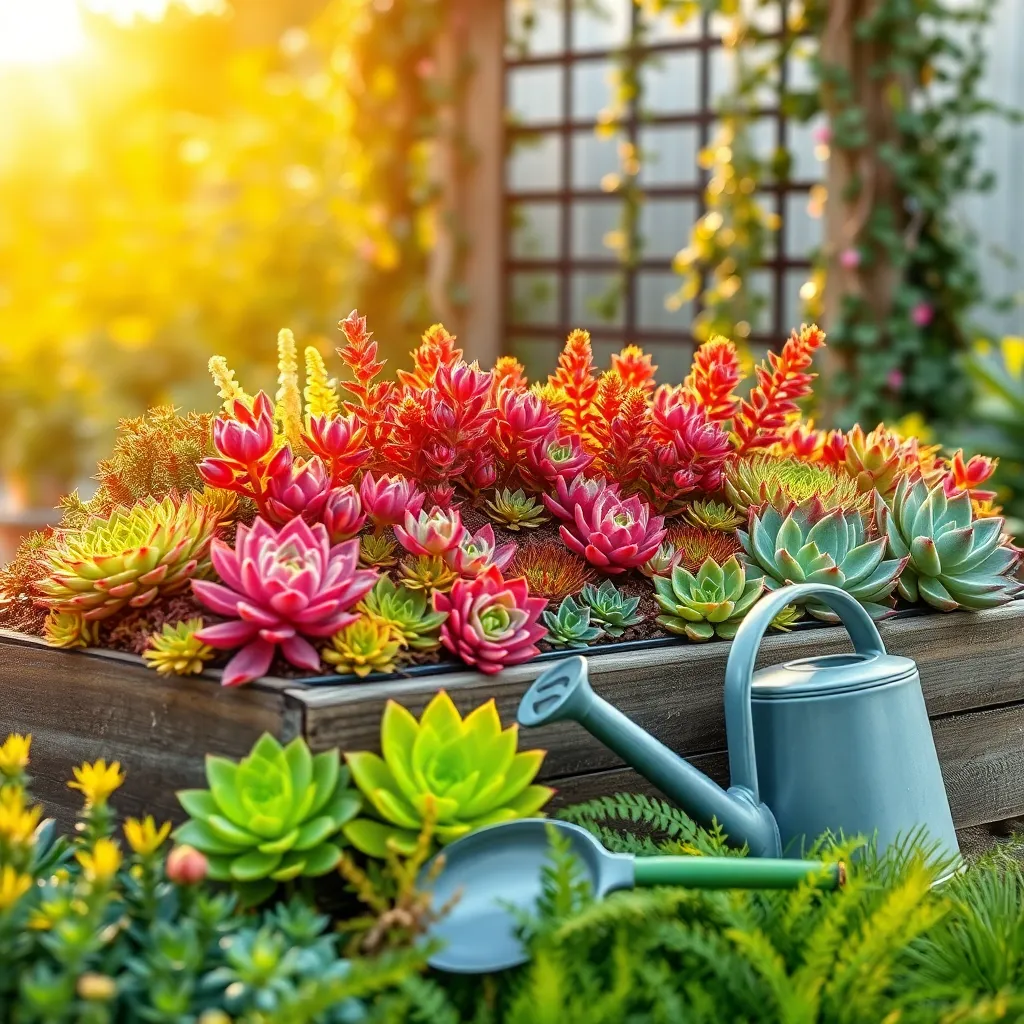
To maintain vibrant color in your succulent garden year-round, it’s important to adjust care routines as the seasons change. During the growing season, typically spring and summer, ensure that your succulents receive adequate sunlight, ideally about six hours a day, to promote healthy, colorful growth.
As the weather cools in fall, consider reducing watering to prevent root rot; succulents generally need less water as they enter a dormant phase. Use the “soak and dry” method by watering thoroughly and allowing the soil to dry completely before the next watering to maintain plant vigor.
Winter care involves protecting your succulents from frost, which can damage their leaves and reduce their color intensity. If you live in a region with harsh winters, you might need to bring them indoors or use frost cloths to shield them from the cold.
For those with indoor succulents, maintaining humidity levels is crucial, especially in heated environments where the air can become dry. Placing a shallow tray of water near your plants can help increase humidity, ensuring your succulents remain vibrant and healthy.
Advanced gardeners might experiment with controlled light exposure to enhance the natural pigmentation of their succulents. Consider using grow lights to supplement natural sunlight, particularly during shorter winter days, to keep your collection colorful and thriving.
Pruning Techniques for Shape and Color
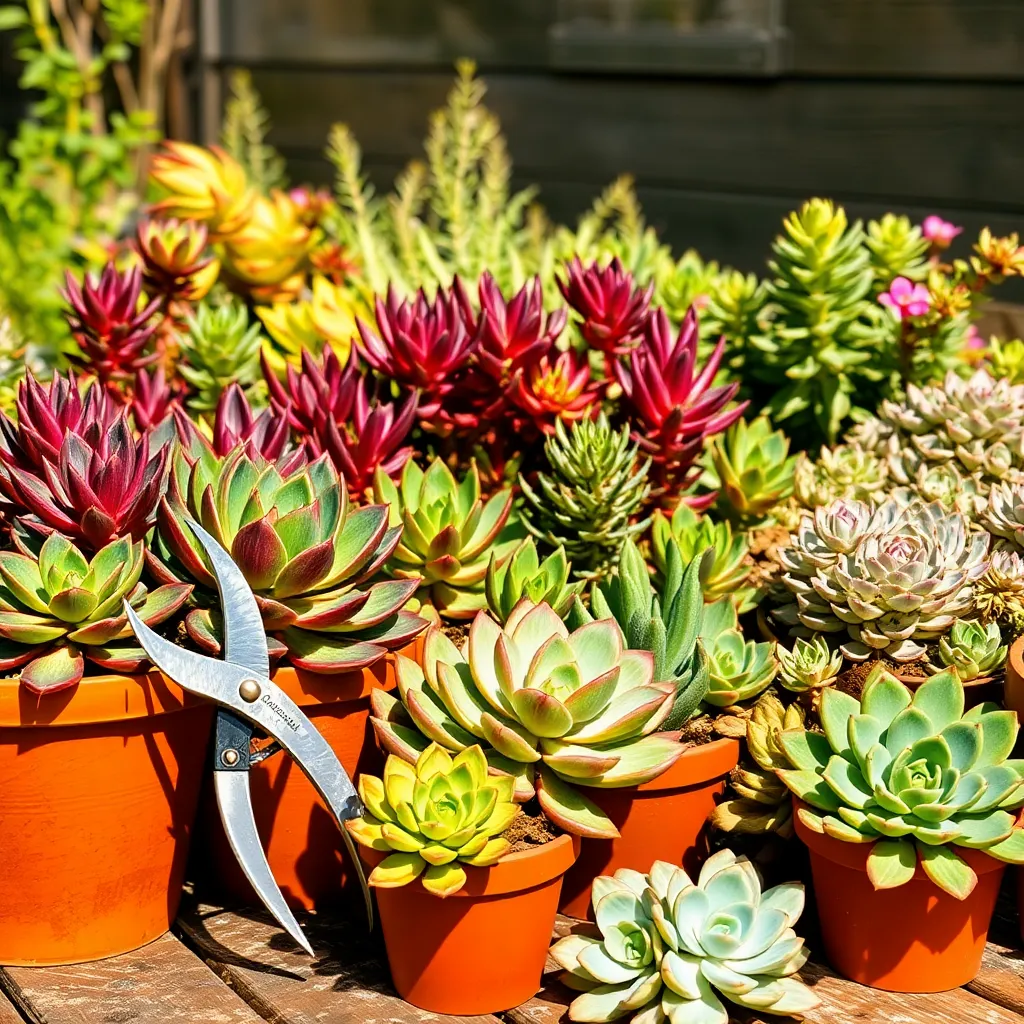
Pruning is an essential technique for maintaining the shape and enhancing the color of your succulents. Regular pruning encourages healthy growth and can prevent your plants from becoming leggy or overgrown. For beginners, start by using clean, sharp scissors or pruning shears to trim back any dead or damaged leaves. This simple step can improve airflow and sunlight penetration, promoting vibrant colors in your succulents.
More advanced gardeners might consider shaping their succulents to create a specific aesthetic or to fit a particular space. Employing the right pruning techniques can help you achieve a fuller and more symmetrical plant. To shape your succulents effectively, focus on cutting just above a leaf node to encourage new growth in the desired direction. This method can be especially useful for creating a balanced look in arrangements or while crafting succulent wreaths.
For optimal results, ensure you’re pruning at the right time of year. The best time to prune most succulents is during their active growth period, usually in spring or early summer. This timing allows the plant to recover quickly and reduces the risk of potential diseases. Additionally, consider using a pair of sterilized scissors or pruning shears to prevent the spread of pathogens. Simply wipe the blades with rubbing alcohol before and after each use.
To further enhance the color of your succulents, pay attention to their growing conditions. Succulents thrive in well-draining soil, so consider using a cactus or succulent-specific potting mix. Proper watering is also crucial; allow the soil to dry out completely between waterings to mimic their natural arid environment. By combining these care techniques with regular pruning, you can enjoy a healthy and colorful succulent garden year-round.
Propagating Colorful Succulents
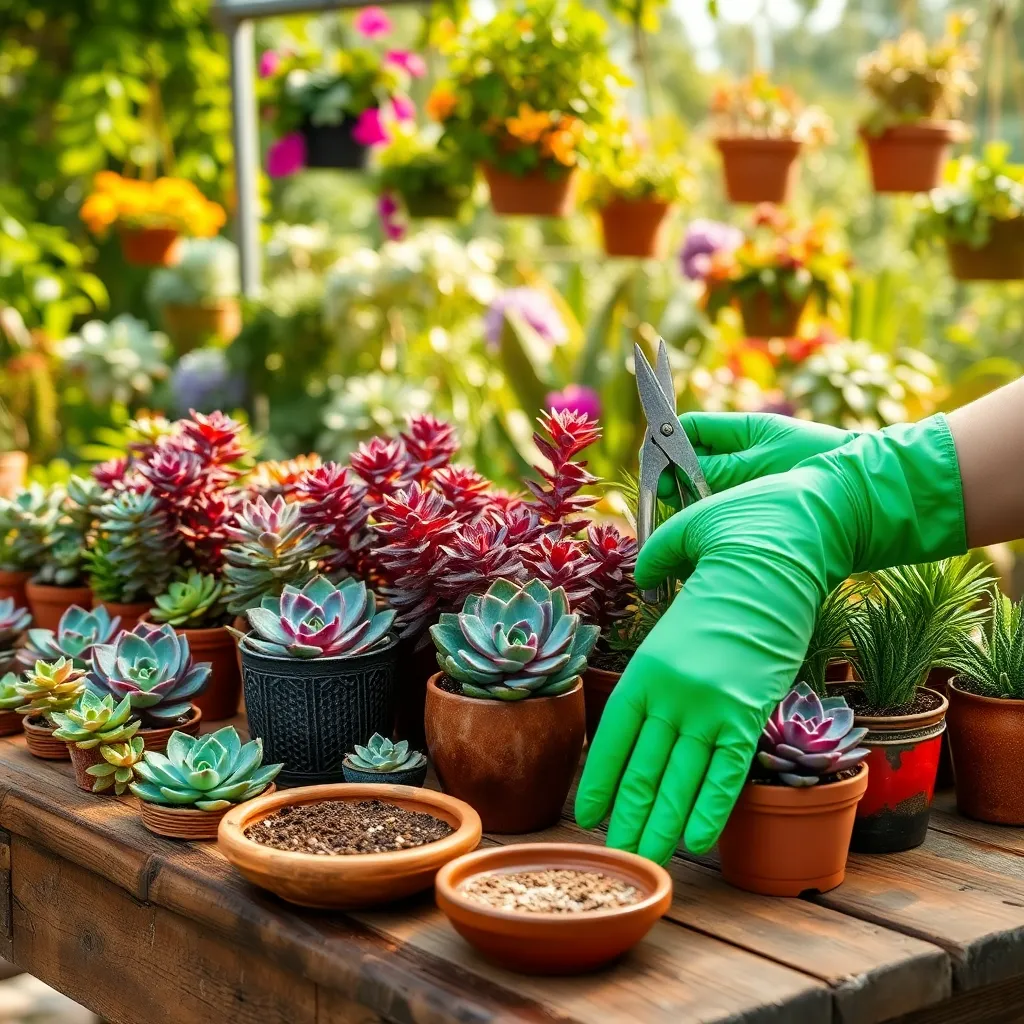
Propagating colorful succulents can be a rewarding way to expand your collection and add vibrant hues to your garden. To start, select a healthy leaf or stem from a mature plant, ensuring it’s free from any damage or disease.
Allow the cuttings to dry for a few days until a callus forms over the cut site, which helps prevent rot. Once the callus has formed, plant the cuttings in a well-draining soil mix, ideally one formulated specifically for succulents and cacti.
Water the newly planted cuttings sparingly, allowing the soil to dry out completely between waterings. This mimics their natural environment and encourages healthy root development without the risk of overwatering.
Place the cuttings in a location where they can receive bright, indirect light, as direct sunlight might be too harsh and cause sunburn. For advanced gardeners, consider using a grow light to provide consistent lighting conditions, especially in less sunny climates.
Common Pests and Solutions
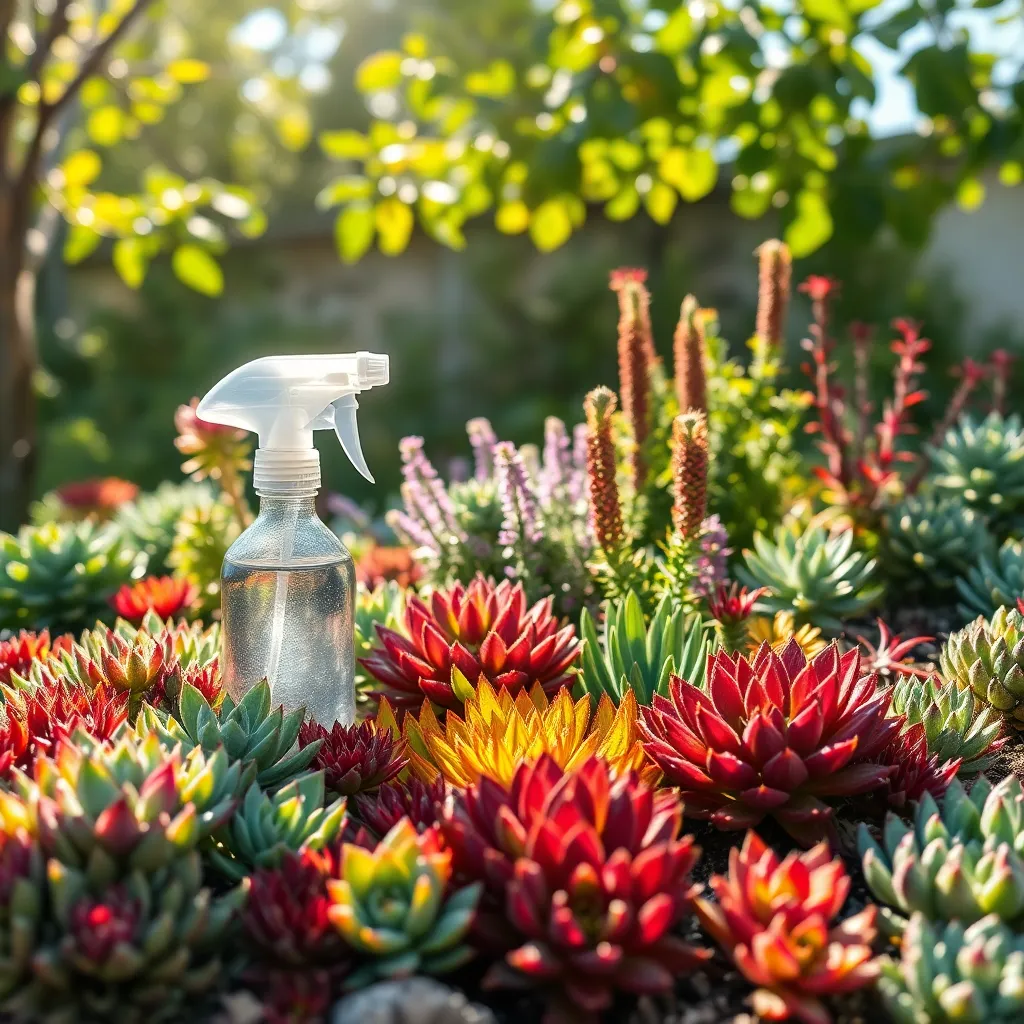
Succulents, while generally hardy, can occasionally fall prey to common pests such as aphids and mealybugs. Regularly inspecting your succulents for signs of infestation is crucial to maintaining their health and vibrancy.
If you notice sticky residue or cotton-like masses on your plants, you might be dealing with mealybugs. A simple solution is to dab the affected areas with a cotton swab soaked in rubbing alcohol, which will effectively kill these pests without harming your succulent.
Aphids, often found in clusters on new growth, can be managed by washing them off with a strong spray of water. In more severe cases, consider using insecticidal soap, ensuring it’s safe for succulents, to help control the population.
For a more preventive approach, consider using neem oil, which acts as a natural pesticide. Apply it sparingly, as succulents can be sensitive to over-treatment; a light misting every couple of weeks should suffice.
Conclusion: Brightening Spaces with Succulents
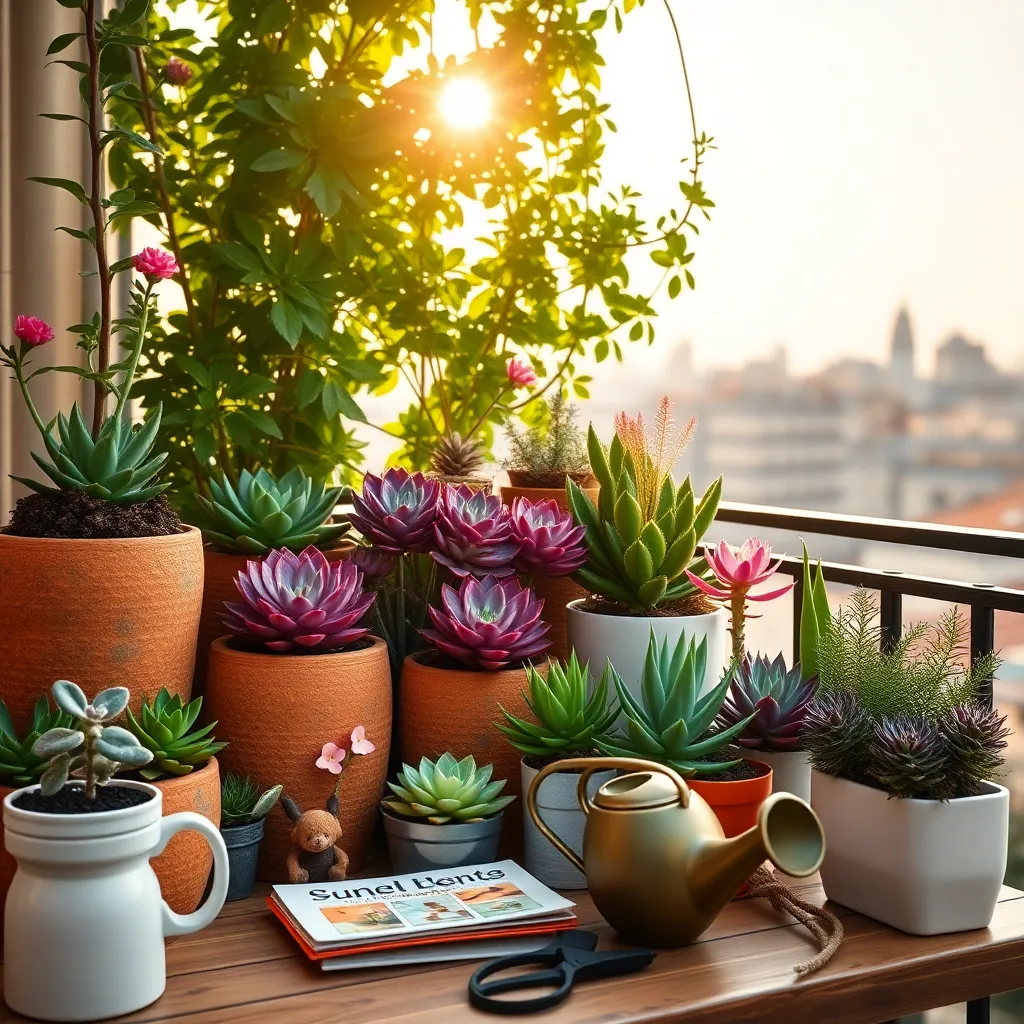
Succulents are a fantastic way to bring life and color into any space, thanks to their vibrant hues and unique shapes. To keep these beauties thriving, it’s essential to provide them with well-draining soil, such as a cactus mix, which will prevent root rot and ensure healthy growth.
Another key to success with succulents is to position them in bright, indirect sunlight, allowing them to photosynthesize efficiently without the risk of sunburn. For those placed indoors, consider rotating them weekly so each side receives equal light, promoting even growth.
Watering succulents requires a light touch, as overwatering is their most common downfall. A practical approach is to water thoroughly when the soil is completely dry, generally every 2-3 weeks, depending on humidity and sunlight exposure.
For more advanced care, consider fertilizing succulents during the growing season with a diluted, balanced fertilizer to encourage robust growth. Monitoring for pests, such as mealybugs, is crucial; they can be managed with a simple solution of water and dish soap sprayed directly on the affected areas.
By incorporating these vibrant succulents into your home or garden, you can enjoy a lively, low-maintenance display that uplifts any environment. With the right care and attention, your succulents will not only survive but thrive, bringing joy and a touch of nature to your space.
Conclusion: Growing Success with These Plants
In exploring the vibrant world of colorful succulents, we’ve uncovered 20 key relationship concepts, each symbolized by a unique plant. From the Aloe Vera’s lesson in soothing conflicts to the Echeveria’s reminder of nurturing growth, these concepts highlight essential aspects such as communication, patience, and trust. By incorporating these insights, you can cultivate a thriving relationship environment that is as diverse and resilient as the succulents themselves.
To take immediate action, choose one concept that resonates with you and implement it in your relationship today. Whether it’s practicing active listening or expressing appreciation, small steps can lead to significant transformations.
Remember, healthy relationships are built over time and require ongoing attention and care. To ensure you have access to these valuable insights whenever you need them, bookmark this article now. This way, you can revisit these concepts and continuously apply them to enhance your relationship.
Looking ahead, embracing these vibrant principles can pave the way for a flourishing relationship that stands the test of time, much like a well-cared-for succulent garden. Empower yourself with this knowledge and watch your relationships bloom.



